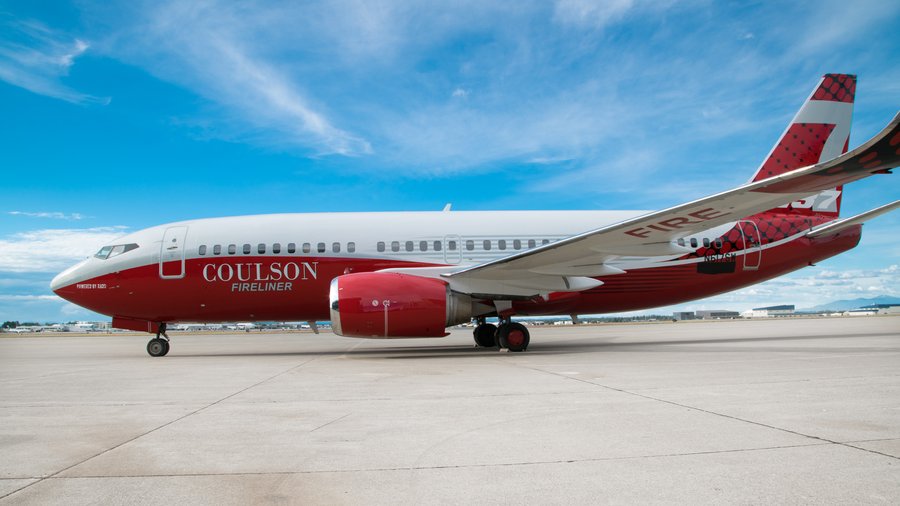See Correction/Clarification at the end of this article.
A Northwest aerospace company has bought six Boeing Co. 737 passenger jets from Southwest Airlines to convert them into aerial firefighting tankers.
It appears to be the first time that Boeing's single-aisle workhorse will be enlisted to fight wildfires from above, dumping 4,000 gallons of fire retardant chemicals at low speed and low altitude.
Coulson Group CEO Wayne Coulson says the converted Boeing 737-300 jets will dump up to 2,100 gallons per second using systems the company originally developed for its fleet of four Lockheed C-130 Hercules cargo aircraft.
They'll also have room for 63 passengers, or enough for three strike teams of 20 firefighters each to drop at airports in fire zones.
The first of the jets is being repainted at an International Aerospace Coatings facility in Spokane. They'll roll out next week when the deal is formally announced.
Coulson said he decided to convert 737s after realizing that there wasn't a single C-130 available anywhere in the world to buy.
"So we looked at other planes and the 737-300 was a perfect fit for us," Coulson said. "We were lucky to get them, and since Southwest was the only owner, they're for the most part in platinum condition."
Coulson declined to say how much his contract aerial firefighting company paid for the airplanes.
"The six 737s were less than one C-130," Coulson said, laughing before adding, "What's expensive is getting the plane right with all the engineering work needed to modify our C-130 system for the 737."
He said Southwest sold the jets because the Federal Aviation Administration would not allow it to fly too many 737 variants at the same time, once it takes delivery of dozens of brand-new, fuel efficient 737 Max 8 jets.
RELATED: Meet the Maxes: What's different about the Boeing Max 7, 8 and 9 jets?
Coulson Group's 200 staffers operate a fleet of C-130s and Sikorsky S-61 helicopters in Portland, Oregon, Port Alberni in British Columbia, and Melbourne, Australia. It operates an air tanker base in Reno, Nevada, and helps the U.S. Forest service and other countries combat wildfires during hot and dry summers.
The fleet won't be the first Boeing aircraft converted for firefighting. Colorado-based Global SuperTanker Services flies a converted Boeing 747-400 jumbo jet that can drop nearly 20,000 gallons of fire retardant.
Correction/Clarification
The story was updated to correct the flow rate at which the tankers will be able to drop fire retardant.




